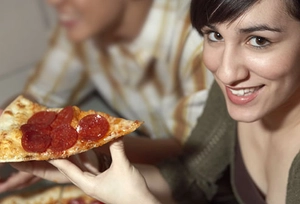Your digestive system is uniquely designed to turn the food you eat into nutrients, which the body uses for energy, growth and cell repair. Here’s how it works.
Mouth
The mouth is the beginning of the digestive tract. In fact, digestion starts here as soon as you take the first bite of a meal. Chewing breaks the food into pieces that are more easily digested, while saliva mixes with food to begin the process of breaking it down into a form your body can absorb and use.

SLIDESHOW
A Visual Guide to Understanding Heartburn and GERD
Throat
Also called the pharynx, the throat is the next destination for food you’ve eaten. From here, food travels to the esophagus or swallowing tube.
Esophagus
The esophagus is a muscular tube extending from the pharynx to the stomach. By means of a series of contractions, called peristalsis, the esophagus delivers food to the stomach. Just before the connection to the stomach there is a “zone of high pressure,” called the lower esophageal sphincter; this is a “valve” meant to keep food from passing backwards into the esophagus.
Stomach
The stomach is a sac-like organ with strong muscular walls. In addition to holding the food, it’s also a mixer and grinder. The stomach secretes acid and powerful enzymes that continue the process of breaking down the food. When it leaves the stomach, food is the consistency of a liquid or paste. From there the food moves to the small intestine.
Small Intestine
Made up of three segments, the duodenum, jejunum, and ileum, the small intestine is a long tube loosely coiled in theabdomen (spread out, it would be more than 20 feet long). The small intestine continues the process of breaking down food by using enzymes released by the pancreas and bile from the liver. Bile is a compound that aids in the digestion of fat and eliminates waste products from the blood. Peristalsis (contractions) is also at work in this organ, moving food through and mixing it up with digestive secretions. The duodenum is largely responsible for continuing the process of breaking down food, with the jejunum and ileum being mainly responsible for the absorption of nutrients into the bloodstream.










